Showing reports 21 - 30 of 41 in category Risk Governance, Health and Safety Issues:
| Nanoparticles: An occupational hygiene review | |
| Source: UK Health and Safety Commission – Publication date: 2004 | |
 | This review focuses on processes for the deliberate development and manufacture of nanoparticle products. It concludes that there is little evidence to suggest that the exposure of workers arising from the production of nanoparticles has been adequately assessed. |
| NanoRiskCat - A Conceptual Decision Support Tool for Nanomaterials | |
| Source: Danish EPS – Publication date: December 2011 | |
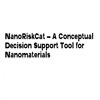 | In this project funded by the Danish EPA the Technical University of Denmark and National Research Centre for the Working Environment has initiated the development of a screening tool called NanoRiskCat (NRC) for the evaluation of exposure and hazard of nanomaterials contained in products for professional and private use. The aim was to identify, categorize and rank the possible exposure and hazards associated with a nanomaterial in a product. NanoRiskCat is using a stepwise approach based on existing data on the conventional form of the chemical as well as the data that may exist on the nanoform. |
| Nanosafety in Europe 2015-2025: Towards Safe and Sustainable Nanomaterials and Nanotechnology Innovations | |
| Source: Finnish Institute of Occupational Health – Publication date: June 2013 | |
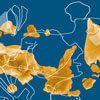 | The Finnish Insitute of Occupational Health, together with the members of the European Nanosafety Cluster, that is, over a hundred European nanosafety research experts, have produced a research strategy for the European Commission. The strategy outlines the focal points of nanomaterial safety research for the Commission's 8th framework programme (Horizon 2020). |
| Nanotech: Is small scary? | |
| Source: Bulletin of the Atomic Scientists – Publication date: October 2004 | |
 | Nanotechnology seems to offer much the same promise--and danger--as biotechnology seemed to have in its early days. And it has attracted many of the same friends and foes. An article in Bulletin of the Atomic Scientists. |
| Nanotechnologies - A Preliminary Risk Analysis | |
| Source: European Commission – Publication date: March 2004 | |
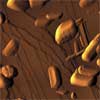 | Report based on a workshop organised in Brussels on 1-2 March 2004 by the Health and Consumer Protection Directorate General of the European Commission. |
| Nanotechnology - Small matter, many unknowns | |
| Source: Swiss Re – Publication date: 2004 | |
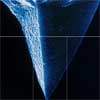 | Swiss Re has dedicated teams of experts which track new or emerging risks, and nanotechnology is one of those topics currently in focus. After all, it is is vital for the insurance industry to know what losses a new technology can give rise to and what the extent and the frequency of such losses will be. With these basics more or less established, the insurer can better assess the future loss burden, calculate a premium commensurate with the risk and grant adequate insurance cover. |
| Nanotechnology's Invisible Threat | |
| Source: National Resources Defense Council – Publication date: May 2007 | |
 | The Natural Resources Defense Council (NRDC) has created a three-part framework for regulating nanomaterials, based on already established precautionary approaches to managing toxic chemicals that are broadly agreed upon by environmental and worker protection groups. |
| Nanotechnology: A Research Strategy for Addressing Risk | |
| Source: Project on Emerging Nanotechnologies – Publication date: July 2006 | |
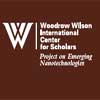 | This report proposes a comprehensive framework for systematically exploring possible risks. |
| Nanotechnology: Health and Environmental Risks of Nanoparticles | |
| Source: Umweltbundesamt (German Federal Environment Agency) – Publication date: August 2006 | |
 | Initiated and coordinated by BAuA (Federal Institute for Occupational Safety and Health), UBA (Federal Environment Agency), BfR (Federal Institute for Risk Assessment) and BAuA have developed a joint research strategy, that addresses especially health and environmental risks of engineered nanoparticles. |
| Novel Materials in the Environment: The case of Nanotechnology | |
| Source: Royal Commission on Environmental Pollution – Publication date: November 2008 | |
 | The report was prompted by concerns about potential releases to the environment from industrial applications of metals and minerals that have not previously been widely used. As the majority of the evidence the Commission received was almost entirely focussed on manufactured nanomaterials, the Commission decided to focus on this sector, as an exemplar. The report examines issues related to innovation in the materials sector and the challenges and benefits arising from the introduction of novel materials (specifically nanomaterials). |
